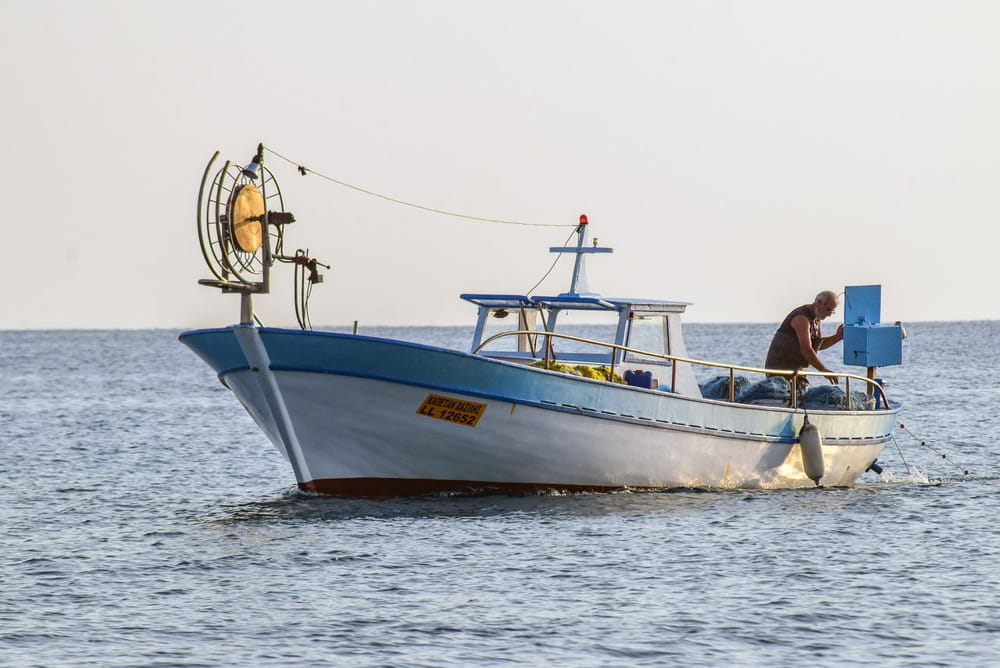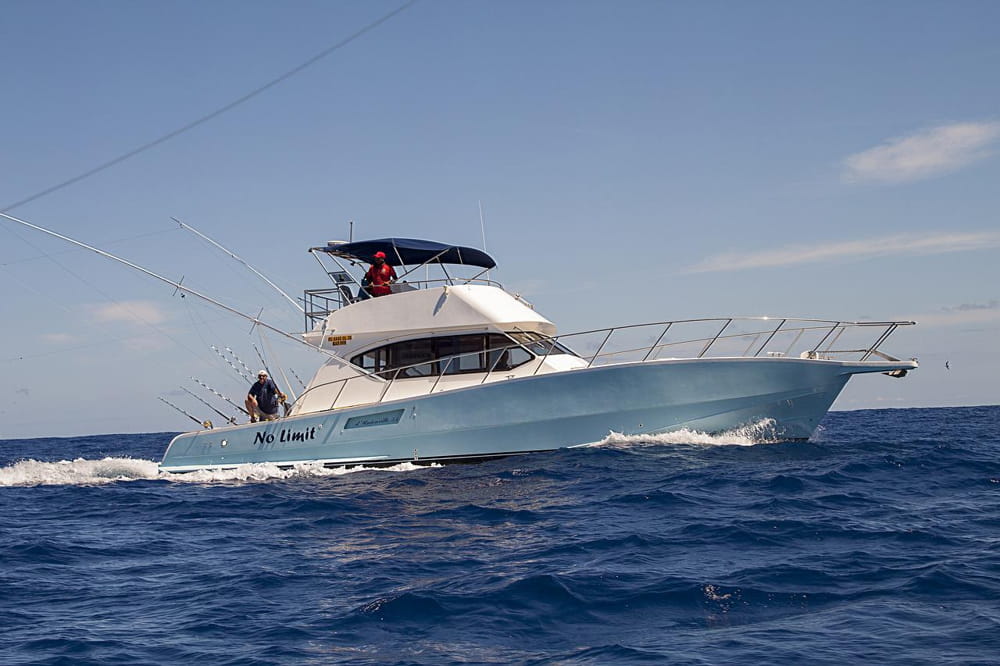To some people, fishing is a type of sport. Hence, they don’t mind challenging their skills with more complicated tasks, and deep-sea fishing is among them.
This experience requires specific techniques and gear as you will travel further into the sea. Yet, the fruit will be rewarding.
We will share some deep-sea fishing tips for beginners in this post. Let’s join us and be ready to conquer the sea!
What Is Deep-Sea Fishing?
Deep-sea fishing refers to the distance you fish from the seafloor, which is at least 100 feet. Because of the high difficulty level, some people also call it “big game fishing” or “sportfishing.”
Deep-sea fishing vs. Offshore fishing
Some beginner anglers confuse deep sea fishing and offshore fishing. Yet, they are not the same thing, with the deep sea one much harder.
Offshore waters may be about nine miles away from the shore. With this distance, its depth is around 50 to 110 feet.
Meanwhile, deep-sea fishing requires a further distance. The grounds often have wrecks, oil rigs, and reefs that big fish love swarming around.

Where are deep-sea fish?
The depth of the water you fish in is the most critical factor. Yet, the travel time to reach more than 100 feet deep waters might vary depending on your location.
For instance, the sea floor at Destin slopes steeply. So, within several miles of the coast, you can access deep waters.
However, traveling along Mexico’s western coast can find deep-sea species less than one mile from shore when the continental shelf suddenly vanishes.
Deep-Sea Fishing Tips For Beginners
Although there are numerous factors to consider, we focus on the most common elements that novices should prioritize.
Choose the right clothing.
The weather has a significant impact on your clothing. For example:
- On hot days: To prevent sunburn and getting too hot, you must prepare lightweight, long-sleeved shirts featuring UPF protection. The material for your clothing should also be breathable.
- On cold days: A fleece or a water-resistant cold-weather jacket can keep you warm in the sea.
Besides, a pair of anti-slipping shoes can help. Waterproof clothes should also be on your checklist.
Check for the weather.
Checking the weather is a rule of thumb every time you go out. In deep-sea fishing, the weather plays an even more vital role. So, follow the weather forecast and prepare the necessary tools to avoid mishaps during your trip.

Hire a charter
A seasoned charter can guide you through the ocean and will be very helpful for first-time anglers. Safety is vital while operating a boat, and a knowledgeable captain should make your first deep sea fishing trip profitable and safe.
It’s also crucial that the captain knows the boat’s capabilities and understands when to steer the ship around if the sea is too harsh.
Yachts of all shapes and sizes may capsize; having a charter that is familiar with the weather will make your first voyage safe and pleasurable.
Prepare proper equipment
The charter will tell you the necessary type of bait, lines, and rods for your trip. Follow their instructions to have the right gear for an enjoyable experience.
Your trip may also require a tackle box and general angling accessories.
For example, an electric angling reel is necessary for bouncing in the deep sea. You can check up online to find the tools.
Pack an ice chest
Make sure to have a big ice chest filled with lots of ice if you are hunting for fish that you eat. To keep them fresh, you should put them on ice as soon as you’ve caught them.
Moreover, you don’t want to spend the whole day fishing without having the necessary storage.
If the fish spends hours in the sun, you risk losing your catch to other predators or the environment. The ice chest is also excellent for keeping your prey from spoiling.
Take advantage of technology.
All sports and leisure activities now come with technological assistance. Before your angling adventure, you should do thorough research to determine which electronic equipment can aid you in catching fish.
There is a strong likelihood that the captain of a boat may have fishing equipment on board. Yet, knowing what you will do is always necessary.
Make sure the boat has fish locators, radio communication, and other technology to locate the fish if you’re taking a boat for the first time.
If your boat stops working and you find yourself alone on the water, it will be essential to have your cell phone nearby, fully charged, and the “find my phone” mode activated.
In an emergency, it is advisable to let your family and friends know exactly where you will be going.
Fish with live bait
The bait may be the first thing to blame when a fishing excursion is unsuccessful. In the ocean, predatory wild fish prefer smaller bait fish.
Live bait will be a better choice if you are hunting for a particular species. Yet, do some research to understand your target fish’s preferences and behaviors for the best outcome.
Expect motion sickness
The vibration of a boat rolling in the open sea is not for everyone. When ocean waves are rough, your boat can rock so fiercely that it makes you seasick.
Bring Dramamine or a similar antihistamine to protect yourself from motion sickness. These medications can treat nausea, dizziness, and vomiting.
Pack your meal
Some excursions could take about an hour or more to finish. You also need to count the traveling time, including one hour out and one hour back. You will have a day-long adventure by including packing, docking, and angling time.
So, remember to bring food with you. Perishable treats like protein shakes and electrolyte-rich beverages can keep you fed for a day of angling.
For a wonderful trip, it is essential to keep your body adequately fed and hydrated, just like in any outdoors.
Best Techniques For Deep Fishing
The three techniques we discuss can help you have a successful excursion.
Trolling
Trolling basically entails using a running boat to drag lures through the fishery of your choice. So, how can you follow this method?
You need two to six rods, which means you troll two to six lines. This trick helps you cover a larger area and aim for various water depths.
The captain can help you by using outriggers and downriggers.
- Outriggers can extend from the vessel to let you set more lines and create distance between the baits.
- Downriggers can lower your baits in the sea with heavy weights. When your prey bites the bait, the clip will detach.
Bottom fishing
The core principle of bottom fishing is to place your bait near the ocean floor or even directly on top of it while waiting for the prey to hit.
You can also use motions like bottom bouncing, in which you pull the bait down the bottom of the sea to imitate bait fish.
The equipment needed for bottom fishing typically consists of a hook, bait, sinker, and line. Your captain has the necessary equipment on board for you.
Deep dropping
As the name implies, deep dropping means lowering baits really deep! This method will work in waters at least 300 feet deep, where you will come across deep-sea creatures like the Swordfish.
While deep dropping and bottom fishing look similar, deep dropping differs because of the water depths and the gear you’ll require.
Your captain will use specialized electric deep-drop hooks that can strike the seafloor and bring any huge fish that decides to strike to the surface.
Conclusion
Deep-sea fishing is a fantastic experience that every angler wants to try. If you are new to this excursion, careful and thorough preparation will help you avoid mistakes and make the best of your trip.